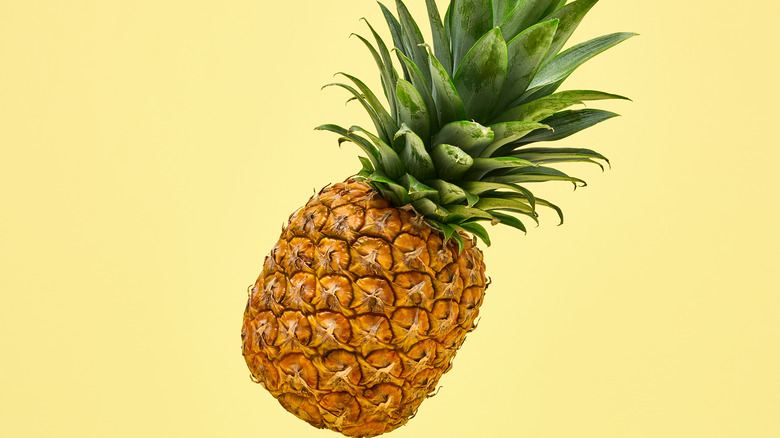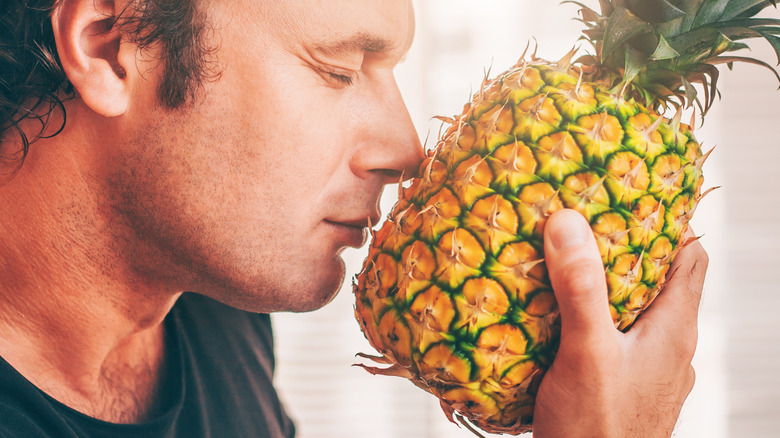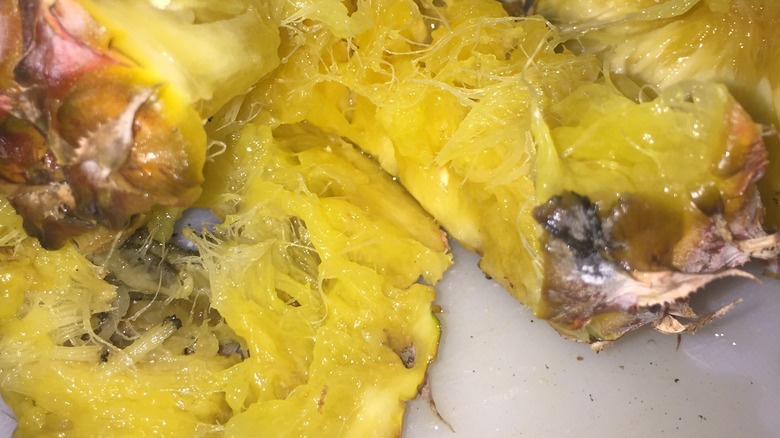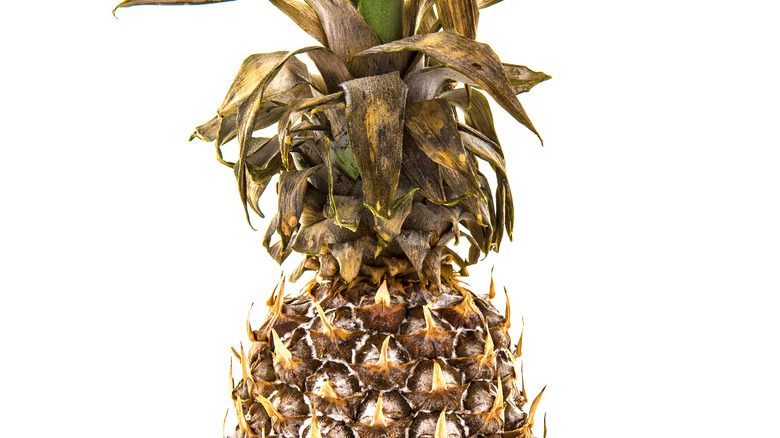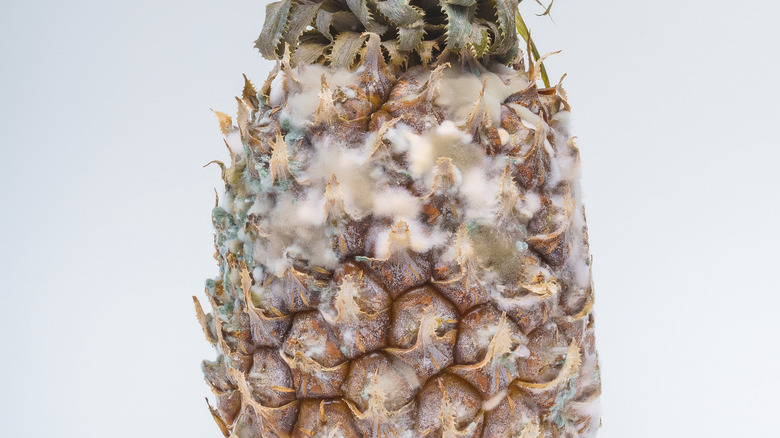How To Tell If Pineapple Has Gone Bad
Pineapple, that funky-looking, spiky tropical fruit, is packed with essential vitamins and minerals such as Vitamin C, manganese, potassium, and iron. It's rich in antioxidants and provides numerous potential health benefits, from improving digestion to bolstering your immune system.
A fresh pineapple tastes sweet and juicy, but like any other food product, you want to toss it when it goes bad. There are generally a few telltale signs to discern if a pineapple has turned and you need to discard it. The sniff test is one reliable method to detect spoilage. A change in texture provides another obvious clue that a pineapple could be a risky proposition. Discoloration is another indication it might be time to part ways.
Expiration and "Best if used by" dates on products are another way to tell if something has gone bad, but many foods can be safely eaten beyond what's listed on the label. According to the USDA, these dates refer to the period of a food's optimal quality and not its safety. Moreover, pineapples often don't have "Best by" dates. Instead, checking for mold might be a better approach.
It's important to recognize whether a pineapple or other food has spoiled because consuming it will not only taste unpleasant but may harm your health. One possible risk is contracting food poisoning, which happens to 48 million Americans annually and includes symptoms such as abdominal cramps, diarrhea, nausea, and vomiting. Luckily, there are some easy ways to tell if pineapple has gone bad.
Smell is important
Smell is one of the most powerful indicators in helping you determine if "something is rotten in the state of Denmark." A pungent aroma can send a clear message that a food or beverage is past its prime. The USDA states that "foods that deteriorate and develop unpleasant odors" are a clear sign of spoilage.
A fresh pineapple will normally produce a sweet smell, but as it goes bad, over a period of time it will ferment and start to give off a vinegar-like sour odor. No one wants to waste food, but they also would prefer not to get a discomforting illness either, and this sharp fragrance is nature's way of signaling to you that it's time to move on from this particular pineapple and cut your losses. It should hopefully go without saying, but if a pineapple smells of chemicals, it would also be prudent to avoid it.
Check the pineapple's texture and taste
A ripe pineapple is a pretty sturdy fruit. But it does spoil quickly, and when it turns rotten, it will lose its firmness and develop a soft, wet bottom on the outside. The inside of the fruit can acquire a softer, mushy texture. Pineapples should taste just as sweet as they smell, yet when they go bad they can be bitter and unappealing to the palate.
As with any food, proper storage is key to keeping pineapples longer. Even though they are sold at room temperature in the supermarket, pantry or countertop storage of pineapples should be avoided unless a person plans to eat them within a day or two of purchase. A pineapple may spoil in a mere few days if placed in these conditions.
The solution to making pineapple last longer is putting it in the refrigerator or freezer. You should also be careful to not place any other items on top of pineapple when storing because they bruise easily, which further impacts the texture. Even in the fridge, the typical shelf life of pineapple is about five days, so this is one fruit you can't leave sitting around.
If you freeze a pineapple, experts suggest cutting it up beforehand and storing it in airtight freezer-safe containers, where it can generally last for up to six months.
Consider the pineapple's color
Examining the color of a pineapple is another method of learning whether it is safe to eat, but as the USDA qualifies, when it comes to food, although there can be a color change as spoilage sets in, "often a fading or darkening," a "change in color alone does not mean the product is spoiled."
Making sure you have the freshest possible pineapple can start at the grocery store by checking the leaves on the crown to ensure they are green and not losing color and turning brown. A ripe pineapple's exterior will appear greenish-yellow. Another sign that pineapple may be on its way out is the discoloration of the body of the fruit, which can appear brown and desiccated.
You can also gauge whether the fruit itself is beginning to go bad by inspecting the pineapple's interior. As it rots, the flesh of the pineapple turns a darker gold, orange, or brownish color and tastes a bit funky. A little brown may mean the fruit is overripe and still safe to eat, but if the flesh has turned mostly brown, you would be wise to abstain.
Check the pineapple for mold
You're probably more familiar with checking items such as cheese or bread for mold, but pineapple that is going bad can also develop mold spots. LeafTV notes that a pineapple that has acquired mold will show white or occasionally gray spots on the body or leaves of the fruit. The outside of the pineapple might also have fuzzy white spots, which could be a fungus. It is not recommended to eat a pineapple when it is growing mold.
LeafTV does add that in certain cases you "may notice things that resemble white polyps on pineapple flesh along indentations," which are part of the ovaries of the fruit and are perfectly safe to eat. The flesh of pineapples can also begin to grow white dots of mold when left out too long, yet another indication that it needs to be thrown away. Use these tips to ensure that you enjoy your pineapple at its freshest and juiciest.
